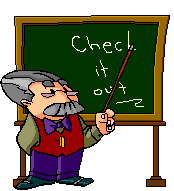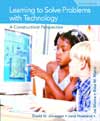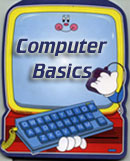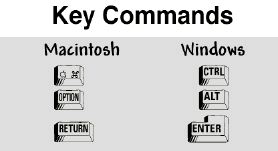
| INSTRUCTOR |  |
|
| Gary Burns | ||
| 150 Peik Hall, 159 Pillsbury Dr. S.E. | Phone/ Voice mail:(612) 617-0017 | |
| University of Minnesota | E-mail: UofMSnoopy@mac.com | |
| Minneapolis, MN 55455-0208 | Office Hours:* (by appointment) |
 |
COURSE DESCRIPTION & OUTCOMES EdHD 5007 is a P-12 Professional Education Program course designed to help you become more knowledgeable and comfortable in the use of current technology in education. With its “hands-on” approach, this foundations course involves both an inquiry into how technology might best be employed and requires reflection on its effect on meaningful learning. By exploring ways technology can be used to support and encourage the diversity of students encountered in your classrooms, EdHD 5007 will assist you in discovering ways of integrating content-specific technology into your curriculum. Upon completion of this course you should be able to: |
|
|
Standard 2-Student Learning: understanding that learning
opportunities must be provided that support a student's intellectual, social,
and personal
development;
Standard 3-Diverse Learners: supporting diverse sorts of
learners and demonstration of their learning through technology use;
Standard 4-Instructional Strategies: having students demonstrate
learning through production of products with technology;
Standard 5-Learning Environment: using technology to create active,
engaging, productive environment for students;
Standard 6-Communication: creating rich, expressive environment
via technology;
Standard 7-Planning Instruction: planning and managing instruction
based upon knowledge of subject matter, students, community, and curriculum
goals;
Standard 8-Assessment: using formal and informal assessment strategies
to evaluate and ensure continuous intellectual, social, and physical development;
Standard
10-Collaboration, Ethics, and Relationships: developing
ways to communicate and interact with parents or guardians, families, school
colleagues, and the community to support student learning and well-being.
EdHD 5007 Software Specific Standards
Textbook
 |
Learning to Solve Problems with Technology (2nd ed.)
by David H. Jonassen et al. Includes uses of Internet research, web publishing,
conferencing, building communities, video, hypermedia, microworlds and
virtual reality. The learning strategies described include active learning,
problem-based learning, inquiry, discourse, learning by visualizing and
by constructing reality. Available UofM Bookstore: $36.35 (Amazon $34.51) |
| Atomic Learning Site: In addition to this course web site, you are encouraged to view online tutorials from Atomic Learning. This site provides short QuickTime video clips for all software applications presented in this class. Many are free - others require a subscription. However, they do provide a free trial subscription and discounts for teachers. |  |
Supplies
Since most of your EdHD 5007 class work requires  computer-based
tasks, you will need the proper media to submit completed assignments. Due
to the larger file sizes of some projects, it is recommended you purchase at
least two Zip™ disks* (approx.$12-20) or. preferably, a package of blank
CD-R disks** (approx. $8-10). Zip disk drives are available in Peik, Coffman,
Walter, and COB 135 labs. CD “burners” (drives that can save/burn
to a CD) are found on all lab computers.
computer-based
tasks, you will need the proper media to submit completed assignments. Due
to the larger file sizes of some projects, it is recommended you purchase at
least two Zip™ disks* (approx.$12-20) or. preferably, a package of blank
CD-R disks** (approx. $8-10). Zip disk drives are available in Peik, Coffman,
Walter, and COB 135 labs. CD “burners” (drives that can save/burn
to a CD) are found on all lab computers.
A "newer" alternative would be the purchase
of a USB Flash drive, which start at $20. As long as you have
a USB port on your computer, these small, portable drives can store from 64
MB to over 1 GB of data. Files can be transferred to the Flash Drive, brought
to class, and copied to the class server
CLASS SESSIONS
The course only meets seven times. Students are expected
to attend all sessions. These lab sessions will involve
demonstration, class discussion, and hands-on work
in the computer lab (Peik 355) designed to help you learn
skills and knowledge necessary to integrate technology into your classrooms.
A portion of every assignment requires your presence in class. Credit
for
these in-class tasks* will not be given in cases of absence.
|
Class
|
Topic
|
Text
|
Software
|
Task Due |
|
August 2
|
Knowledge Construction
|
Chapter 1
|
August 5
|
|
|
August 5
|
Modeling
|
Chapter 2
|
August 9
|
|
|
August 9
|
Visualization
|
Chapter 5
|
August 12
|
|
|
August 12
|
Hypermedia
|
Chapter 3/6
|
August 16
|
|
|
August 16
|
Electronic Portfolios
|
Chapter 3/6
|
August 19
|
|
|
August 19
|
Meaningful Learning
|
Chapter 9
|
August
23
|
|
|
August 23
|
Integration Presentations
|
Chapters 1&2
|
inclusive
|
August 23
|
*Classwork 1: includes inclass photo, folder on C&I server, "Welcome" forum post, and Pre-Survey correctly named and submitted
*Classwork 2: HTML -- index page with working images, URL links, page links, and email links posted on your UofM website
Standards of Effective Practice for Beginning Teachers
Assessed |
|
Assessment |
Outcomes Addressed |
Concept Mapping |
1A, 1B, 1C, 1E, 2E, 2G, 3I, 3K, 5A, 5O, 8H, 8I |
KidPix |
1A, 1B, 1E, 2E, 2G, 3I, 3K, 5A, 5O, 8I |
Powerpoint |
1A, 1B, 1E, 2E, 2G, 3I, 3K, 5A, 5O, 8I |
WebPage-Website |
1A, 1B, 1E, 2E, 2G, 3I, 3K, 5A, 5O, 8I |
eFolio |
1A, 1B, 1C, 1E, 2E, 2G, 3I, 3K, 5A, 5O, 8I |
eZedia |
1A, 1B, 1E, 2E, 2G, 3I, 3K, 5A, 5O, 8H, 8I |
eTIPs |
1A, 1B, 1E, 1G, 1H, 2E, 2F, 2G, 3A, 3E, 3F, 5A, 8I, 8J, 8M |
Class Discussion |
1A, 1B, 1C, 1D, 1E, 2A, 2E, 2F, 2G, 3A, 5A, 5E, 5F, 5K, 5L, 5M, 5P, 5Q, 6K, 7A, 8A, 8B, 8M, 9B, 9E, 8G-J |
Asynchronous Discussion |
1A, 1B, 1C, 1D, 1E, 1G, 2A, 2E, 2F, 2G, 3A, 5D, 6K |
Final Presentation |
1A, 1B, 1C, 1D, 1E, 1F, 1I, 1J, 2A, 2D, 2E, 2F, 2G, 3A, 3F, 3P, 3Q, 4A-L, 5D, 6C, 6D, 6H, 6K, 7E-H, 8E, 8F, 9B, 9E |
It is impossible to cover all the possible technologies you will encounter in a school setting or that you could possibly use in your classroom. This course is designed to give you a concrete hands-on introduction to the most commonly used technologies that can engage students in critical thinking and provide an added value to their learning. In most cases, these technologies are cross-platform (work on both Windows and Macintosh operating systems) With an emphasis on interactive media, technologies covered are cohort-specific
It is required that you use the software in the computer labs on campus unless you have a FULL version of the software of your own. Trial software versions have limited capabilities and cause unneeded stress. You are always further ahead coming to campus and finishing your projects on the U of M’s computer labs with full versions of the software.
Assignments and Grades
 Proficiency Task: Emphasizing
interactive multimedia, particularly sight and sound, you will need to
complete
six (6) Proficiency Tasks. Each task will be a product that you create
using many of the main features taught during the lab sessions. Each Proficiency
Task must be completed and turned in on or before the start of the next
task. Late tasks will be assessed 10% per class past due (a task turned
in after the class due loses 10%, after a second class meets, 20%, etc.)
Proficiency Task: Emphasizing
interactive multimedia, particularly sight and sound, you will need to
complete
six (6) Proficiency Tasks. Each task will be a product that you create
using many of the main features taught during the lab sessions. Each Proficiency
Task must be completed and turned in on or before the start of the next
task. Late tasks will be assessed 10% per class past due (a task turned
in after the class due loses 10%, after a second class meets, 20%, etc.)
Tech Journal: During the course, you’ll be asked to reflect on your progress through what Sandholtz (1997) refers to as the first three stages of instructional evolution. You will first be asked to record your initial thoughts regarding a particular technology application before its use (entry stage). As you work on a project, you will share your experiences with the technology online (adoption stage). Finally, within the project, itself, you will include ideas and suggestions for using the technology in your classroom (adaptation stage), including reflections from the text and class discussions.
Asynchronous Discussions: You will be asked to respond to an (online) asynchronous discussion board. As you work with each project, keep notes on your trials, tribulations and successes with the application. You will post those comments to the appropriate "Forum Board." As with "real" discussion boards, you may also pose a question or reveal a trick you encountered doing the assignment, as well as respond to questions or comments posed by others in the class.
Final Presentation: While there is no final exam in this course, you will be expected to make a 5 minute (multimedia) presentation to the class on August 23. This presentation should demonstrate your understanding of meaningful learning, showing how technology can be integrated into the elementary/special education curriculum. After selecting one of the software applications introduced in this course, you will describe how you would “adapt” it into your classes. A “model” of that lesson should be made available online for all members of the class to observe and possibly manipulate during your presentation. Tell how you would use that application to demonstrate meaningful learning.
Interactive Portfolio: An on-going class assignment will be your Multimedia Portfolio which will showcase your projects and include reflections from this course. In addition to the online efolio, a digital version can be "burned" to a CD during the last class.
Only work submitted on or before 4 pm, August
23rd
|
Relevant University Policies |
Definition of Grades
A - achievement that is outstanding relative to the level necessary to
meet course requirements.
B - achievement that is significantly above the level necessary to meet
course requirements.
C - achievement that meets the course requirements in every respect.
D - achievement that is worthy of credit even though it fails to meet fully
the course requirements.
F - Represents failure (or no credit) and signifies that the work
was either (1) completed but at a level of
achievement that is not worthy of credit or (2) was not completed and there
was no agreement between the instructor
and the student that the student would be awarded an I (see also I).
Final Grade: Final letter grades will be determined using
the following percentages: A: 94% A-:90% B+:88% B:84% B-:80% C+:78% C:74% C-:70% D+:68% |
Academic Dishonesty
Academic dishonesty in any portion of the academic work for a course shall
be grounds for awarding a grade of F for the entire course.
Incomplete Grades
The grade of "I" is not a regular University grade and cannot
be given without special arrangements under unusual circumstances. It cannot
be given merely to extend the time allowed to complete course requirements.
An Inc. can not be given for late work,
except with official medical documentation. If family or personal emergency
requires that your attention be diverted from the course and that more
time than usual is needed to complete course work, arrangements should
be made with the instructor of the course before the quarter ends and consent
obtained for receiving an "Incomplete" or "I" grade.
These arrangements should be made as soon as the need for an "I" can
be anticipated. A written agreement should be prepared indicating when
the course assignment will be completed.
Receipt of Final Grade
University policies do not permit the posting of final course grades
nor the reporting of these grades over the telephone. If you would like
a record
of your course grade before it is available via the University web site,
provide a self-addressed stamped envelope to the instructor at the last
class session. Grades are available online,
normally no later than three business days after the last final exam.
Return of Course Papers
During the course, graded work will be available to students at the
beginning of the following class session. Course work from the final
session will
be available no later than the
beginning of the next semester. The materials may be picked up in front
of the instructor's office (130 Peik Hall) and will be held for one
quarter for you to pick up, after which time they will be discarded.
If you wish
to have your final set of course assignments mailed to you, please
provide the instructor with an envelope (self addressed and stamped)
Additional University Policies |
| Statement on accommodations: It is University policy to provide, on a flexible and individualized basis, reasonable accommodations to students who have disabilities that may affect their ability to participate in course activities or to meet course requirements. Students with disabilities are encouraged to contact their instructors to discuss their individual needs for accommodations. Additional support services |
| Statement on classroom conduct: detailed info and copy of Student Conduct Code |
| Statement on academic misconduct: Scholastic misconduct is broadly defined as "any act that violates the rights of another student in academic work or that involves misrepresentation of your own work." Scholastic dishonesty includes, (but is not necessarily limited to): cheating on assignments or examinations; plagiarizing, which means misrepresenting as you own work any part of work done by another; submitting the same paper, or substantially similar papers, to meet the requirements of more than one course without the approval and consent of all instructors concerned; depriving another student of necessary course materials; or interfering with another student's work. |
| Statement regarding sexual harassment: "Sexual harassment" means unwelcome sexual advances, requests for sexual favors, and/or other verbal or physical conduct of a sexual nature when: (1) submission to such conduct is made either explicitly or implicitly a term or condition of an individual's employment or academic advancement in any University activity or program; (2) submission to or rejection of such conduct by an individual is used as the basis of employment or academic decisions affecting this individual in any University activity or program; or (3) such conduct has the purpose or effect of unreasonably interfering with an individual's work or academic performance or creating an intimidating, hostile, or offensive working or academic environment in any University activity or program. University policy prohibits sexual harassment. Complaints about sexual harassment should be reported to the University Office of Equal Opportunity, 419 Morrill Hall.) |
Submitting Assignments |
||
|
||
NOTE: Windows 98 is
not supported due to the difficulty of connecting |
||
Word to the Wise:
You will be saving your work to the server. However, you are still responsible
for your file should something happen to the server. Therefore, you must
backup all your files to your own disks. If the server "goes down," you
are still responsible for completing the assignment on time. Always
Have A Backup!
Course Laboratory Time
It is assumed that most of the work on class projects will be
done outside regular class meeting hours. The University of Minnesota
policy on class hour-credit ratio estimates that every hour of class
credit, requires three hours a week spent outside of class. While
students are encouraged to use personal computers in their homes or schools
where
they may be teaching, students have free access to the UofM's computing
labs. All University of Minnesota students also receive an e-mail
address and free internet access. Software (CD-ROM or diskette) for connecting
to the internet from home computers is available for a small fee
to registered students in Shepherd Labs, room 190. Printing
from the lab requires either a $1 (10 pages)
or $4 (50 pages) printing card, available, check only, at the lab.
 |
Summer Lab Hours |
|
While computers are available in most University
open labs, certain software needed for this course is available
only in Walter, Peik
355, Coffman and COB 135 Labs. |
Click here to see if specific software is available in a lab BEFORE going there!
As posted: No food or drink is permitted in lab
 |
 |
 |
|